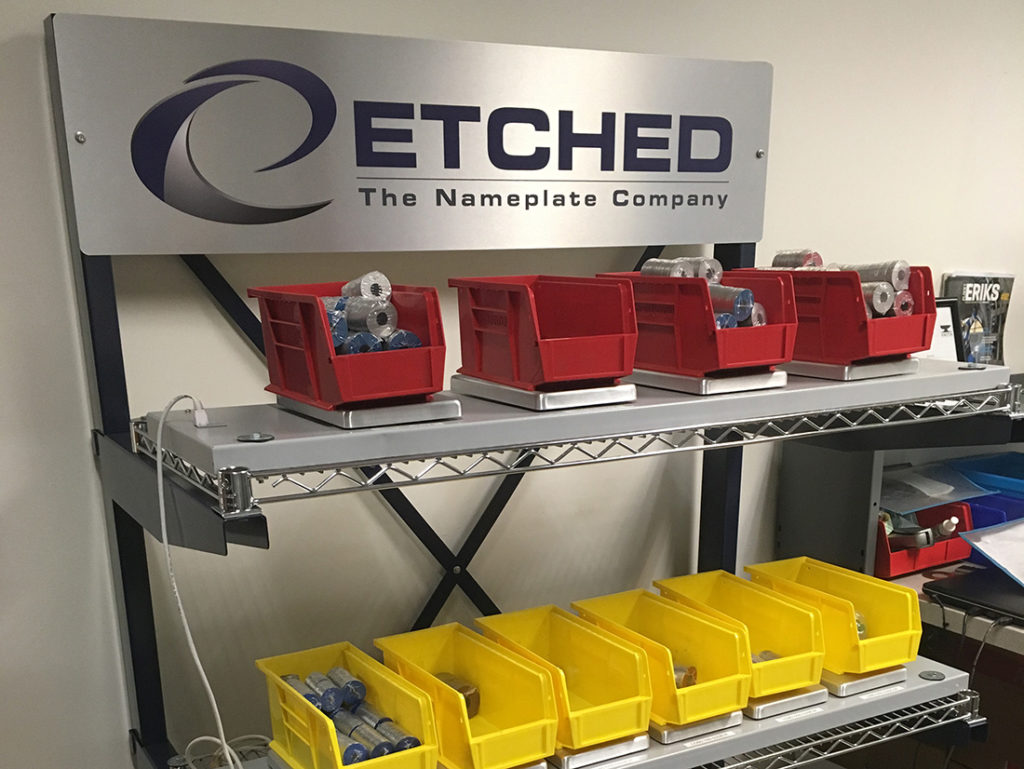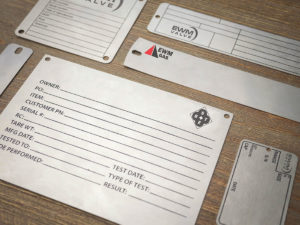
At Etched, we understand that running out of industrial tags or nameplates can lead to costly production downtimes for manufacturers and other businesses. In fact, when we asked our customers what their number one problem was, they said it was running out of tags or not managing their tag inventory correctly.
We have decades of experience solving that problem for our customers. In this blog post, our experts explain 6 tips for effective tag inventory management.
#1: Collect good data
To manage your tag inventory, you first need reliable data on the number of tags you have and the rate at which you go through them. You should have enough tag stock to meet your current and future needs, but not so much that it leads to overstocking.
Maintain accurate inventory data through manual or automated inventory systems. Establish clear communication channels between production and inventory teams to monitor tag stock levels in real-time. Once you’ve created systems to collect accurate inventory data, review that data regularly to reduce the risk of production shortages.
#2: Maintain a buffer inventory of crucial tags
Avoid out-of-stock situations where you don’t have enough tags to meet production requirements by keeping a surplus of select tags in your inventory.
#3: Forecast future needs with market trends and historic usage
Anticipate how quickly you’ll go through your tag stock by analyzing historic usage data and any upcoming changes to your production line. Accurate demand forecasting allows you to plan your tag inventory levels to avoid both overstocking and out-of-stock situations.
#4: Reduce risk of obsolete tags
No one wants a surplus inventory of tags or nameplates that are no longer usable. Regularly review your tag designs to make sure they’re up-to-date in terms of branding and compliance, and partner with a tag supplier who can handle both large and small order quantities.
#5: Minimize risk of rush orders, but partner with a supplier who can handle them
Your supplier should adapt their lead times to your production schedule, and the strategies explained above will reduce the need for rush orders. However, even the best laid plans can sometimes go awry, so make sure your tag vendor can expedite orders in emergencies.
#6: Implement Vendor Managed Inventory (VMI) for your tags
With VMI programs, your tag supplier is responsible for monitoring and maintaining your inventory levels. This ensures that customers always have the required inventory on hand, resulting in fewer out-of-stock situations and lower overhead holding costs.
Not all VMI programs are created equal. Partner with a supplier who leverages accurate data, looks at and acts on that data regularly, and has streamlined supply chain processes in place.
At Etched, we interviewed countless customers before developing the optimal VMI program to meet their needs. Our Tag Inventory Manager (TIM) system ensures customers never run out of tags. We install a TIM unit at each customer’s facility, fitted with bins for each type of tag. We establish minimum and maximum inventory levels for each tag and monitor bin levels daily from our headquarters in Kansas City. When a bin reaches a minimum tag level, we ship more of that tag–easy as that.
To learn more about how TIM works, watch our video:
Have other questions for our experts?
Our team is ready to help with your custom industrial tag and nameplate needs. Contact us today!



